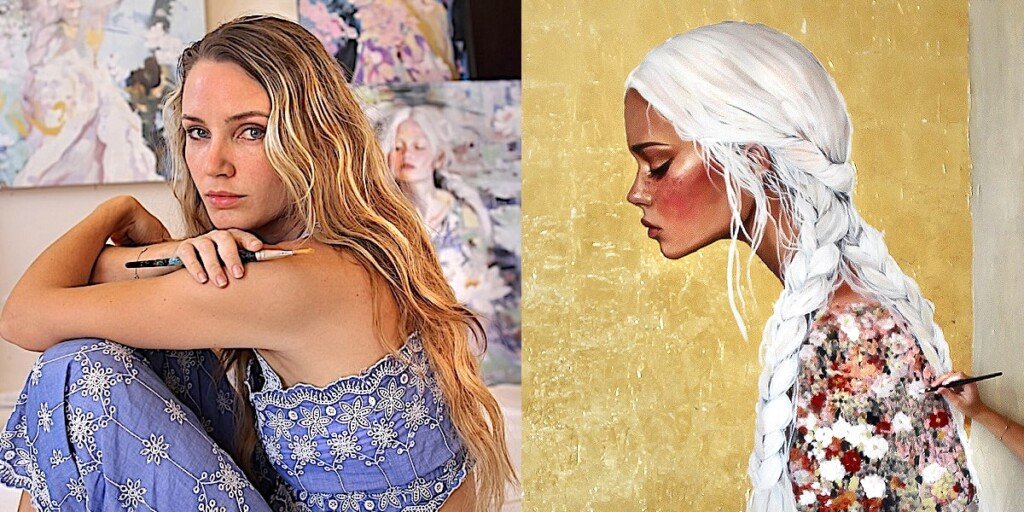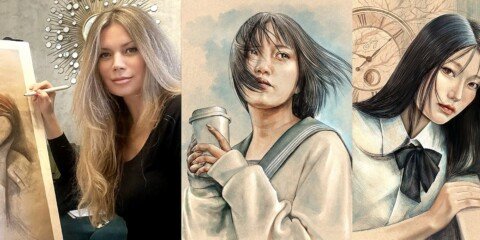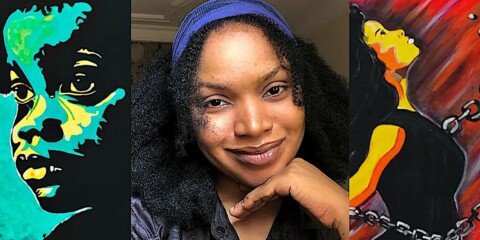Caroline Wendelin‘s journey is a colorful testimony. It asserts that our calling shall always find us. Caroline is born into an extensive cultural tapestry including Finnish-Swedish, German, and Andalusian influences. Her path has traversed a varied landscape. She moved from studying education to traveling as a fashion model. Her career spanned across three continents. Yet, through every life she lived, art remained a quiet, persistent voice tugging gently at her sleeve.
The unprecedented sphinx of stillness during the pandemic of 2020 compelled Caroline to embrace that inner voice. This happened right after she entered motherhood. She gathered her courage and walked away from a steady job. This no-more-excuses moment led her into the daunting yet fully alive world of full-blown creative practice. It has truly become the bedrock of her art.
Caroline, self-taught in art, expresses her soulful, Scandi-meets-Mediterranean sensibility in her artwork. Her paintings depict women who embody the exquisite human paradox. They are fierce yet fragile. In this deeply honest and introspective interview, we delve into the power of this inner voice. Motherhood has become her biggest teacher in human resilience. She believes art is the unmistakable evidence of our existence and capacity to feel, above anything else.
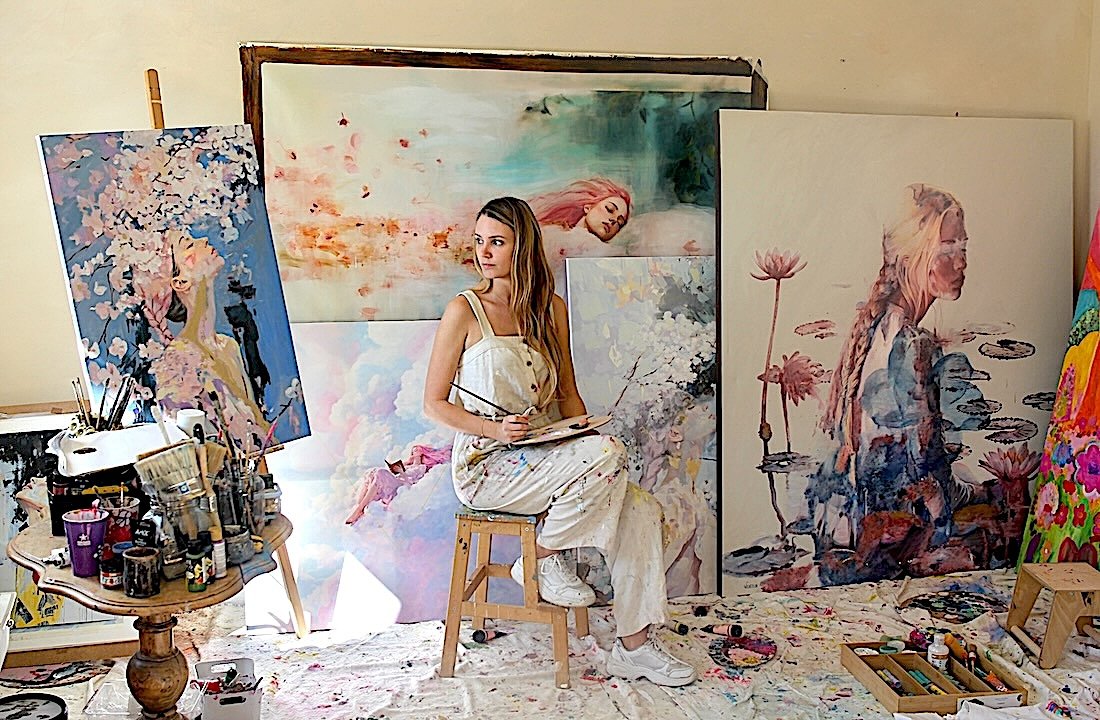
🟥 Can you share a bit about your background and the journey that led you to becoming an artist?
I’ve lived different lives before becoming an artist ; I studied a university degree in teaching in Madrid, I worked as a fashion model in my early 20s which made me live in three different continents, I also worked a lot of “normal” jobs while trying to find my path in life- but art was always there, tugging at my sleeve. I grew up between cultures and languages, I have Finnish-Swedish-German background but grew up in the south of Spain. Both my parents painted when I was a child, so I’ve been surrounded by art since I have memory, but then, I watched them give up on art and find more stable jobs. I kept telling myself the same would happen to me so I didn’t plan on becoming an artist. But somehow, creating has always been my way of making sense of the world, no matter if it’s through painting, writing or music. The real “journey” was realizing that art isn’t just something I do, but it’s my way of living.
🟥 Was there a defining moment or experience that solidified your decision to pursue art seriously?
Yes, the pandemic. I had my first daughter in spring of 2020, so I was in the baby bubble when Spain went into lockdown. The world stopped, and suddenly I had no excuses left. I had been doing art as a “hobby”, and had just managed to organise one of my first exhibitions at a hotel in my city- thinking the pandemic would ruin the exhibition, but somehow the contrary happened: every painting there was sold. I remember delivering the paintings wearing a mask and gloves, praying not to catch covid because I had a newborn baby at home. I then chose to finally listen to that inner voice telling me to quit my office job and do only art full time. It was terrifying, but also the most alive I’d ever felt.
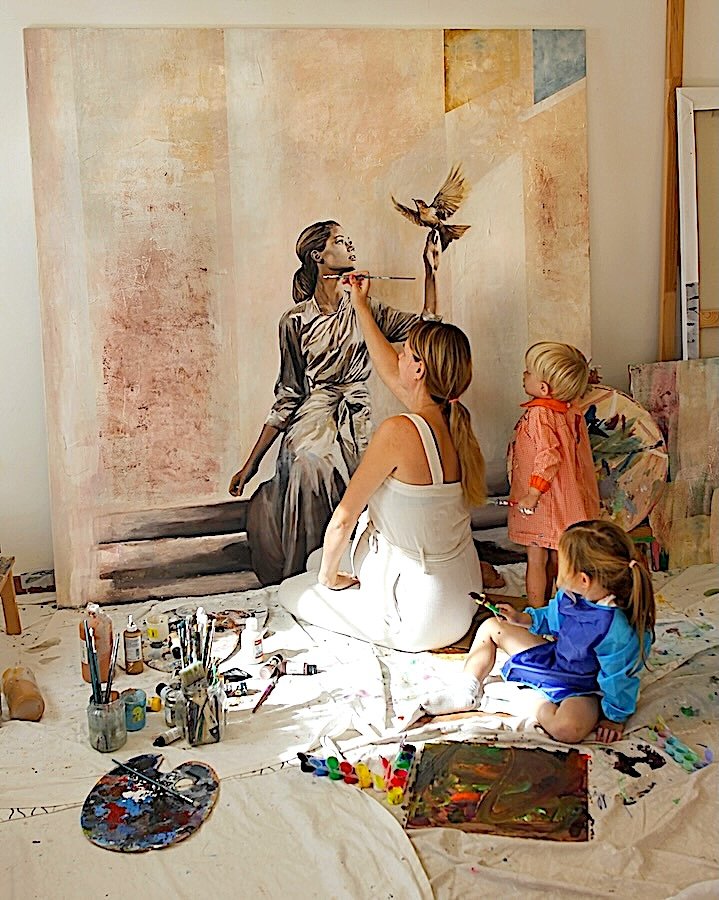
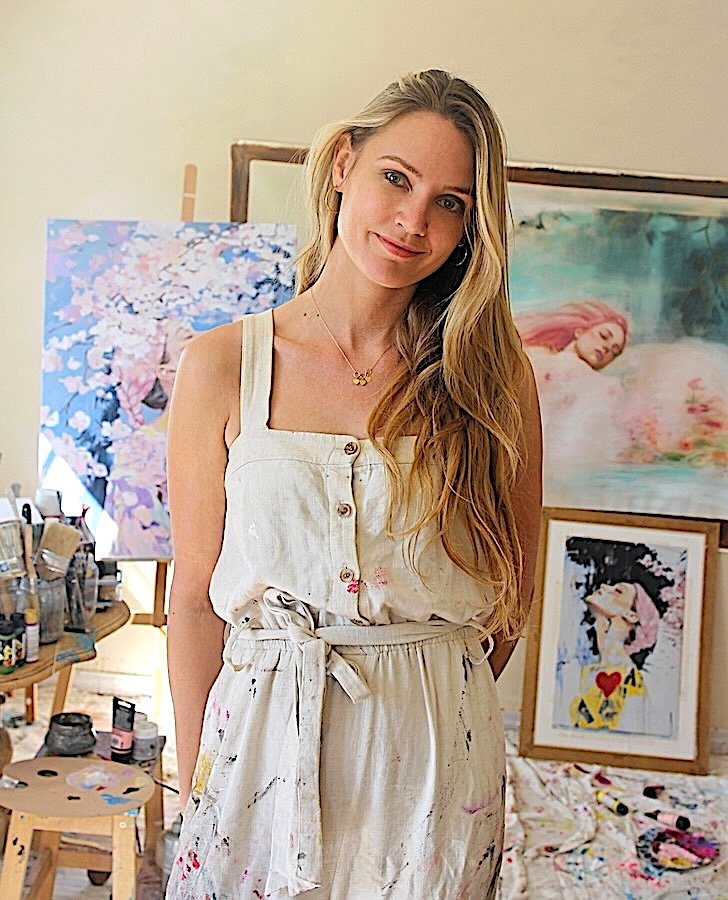
🟥 Do you remember the first piece of art you created, and what inspired you to make it?
When I was little, I used to draw fairies and women covered in flowers. In a way, that’s what I’m still painting today. I’ve always been inspired by tales, epic journeys and specially stories about women who are strong and soft at the same time. We didn’t have smartphones or even access to the internet when I was a child, so when I read a good book I tried to imagine how those brave women looked like and drew them in my notebooks.
It wasn’t my first painting, but one of the first I felt like I was finding my own style: it was the face of a woman in profile view, but half of her face was on one canvas and the other half on another, surrounded by soft neutral colors and abstract shapes. I think that painting marked a before and after to me.
🟥 What inspires you the most when creating your art?
When I was around 20, before becoming a full time artist, I started making colorful pop art inspired portraits of famous people, like Marilyn Monroe- I saw this kind of art in a lot of stores and galleries, and they were very easy to sell- but I didn’t really identify with them. After a while, I got tired of seeing the same faces everywhere. I didn’t want my work to be about a specific person.
Around the time I became a mother, this feeling grew stronger. I would look at my daughter and realize how little l identified with those celebrities, living in a world obsessed with fame. I don’t want my children to grow up feeling that obsession. So I started painting women who could be anyone.
Women you can connect with, not because of who they are, but because of what they make you feel.
Watching other artists work on instagram is also one of my main sources of inspiration, not because of what they paint, but just watching them create makes me feel like I want to keep creating too.
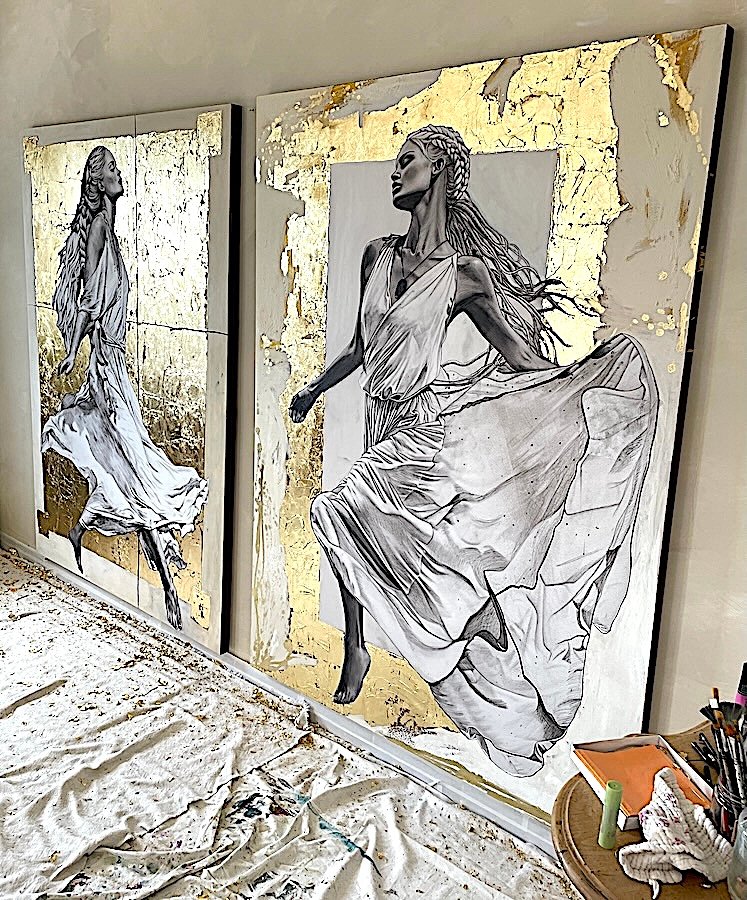
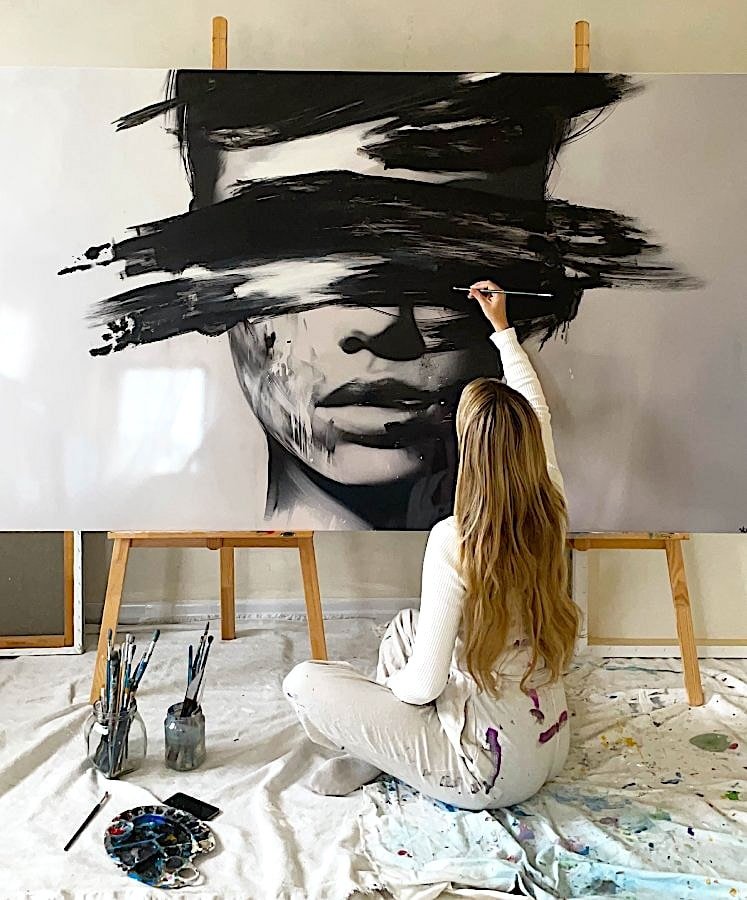
🟥 Are there specific activities, rituals, or moments that fuel your creativity?
Yes. Listening to music, reading books and spending time in nature. It sounds cliche, but creativity doesn’t arrive when I chase it; it arrives when I give it space.
🟥 How would you personally define art, and what deeper meaning does it hold for you?
Art is proof that we existed and we felt deeply. We felt something deeply enough to try to leave a mark. For me, it’s also therapy, it heals the parts of me I don’t always know how to put into words.
🟥 What part of the creative journey excites you the most—conceiving an idea, the act of creating, or finishing the piece?
The moment I decide a painting is finished and I finally get to share it with everyone- both the people I care about and the people who follow my work on social media. Im always nervous and excited to see or read their reactions. When my mother or my husband say they like one of my paintings it feels like magic, as they are my most honest critics and have a very different taste in art than what I paint.
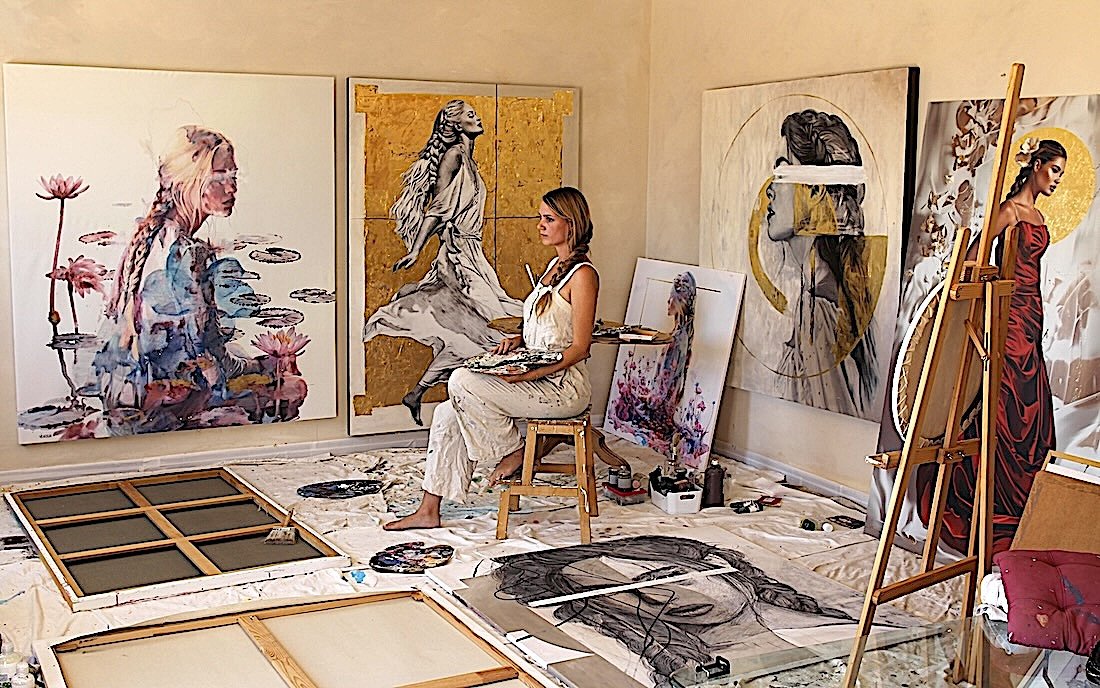
🟥 Do you follow a structured plan when creating art, or is your process more spontaneous?
I always begin with a plan, but I often betray it halfway through. Maybe the real art happens in the rebellion.
🟥 What time of day do you feel the most creative, and why do you prefer that time for your work?
I like painting in the mornings, but I get my ideas in the night. When the house is quiet and everyone’s dreams are floating around, I can finally hear my own.
🟥 Do you listen to music while creating, and how does it influence your process?
Yes. Sometimes it’s classical, sometimes it’s rock, sometimes it’s the soundtrack of a movie. But even more often than music I listen to podcasts- being an artist is a bit lonely sometimes, so listening to people talk about interesting topics while I paint makes me feel like I’m connected to what’s going on around me.
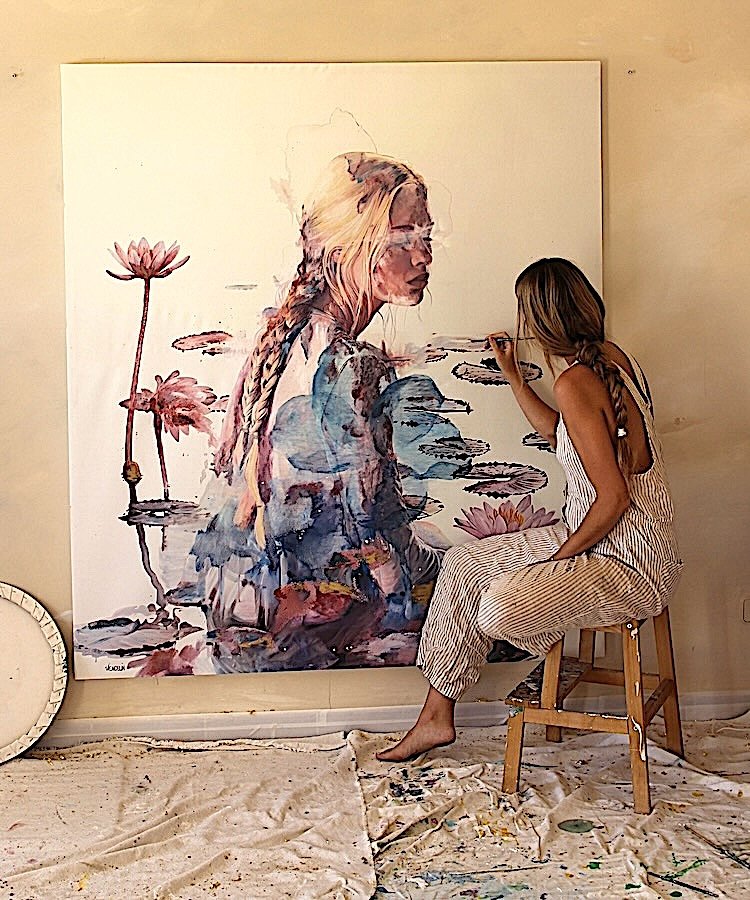
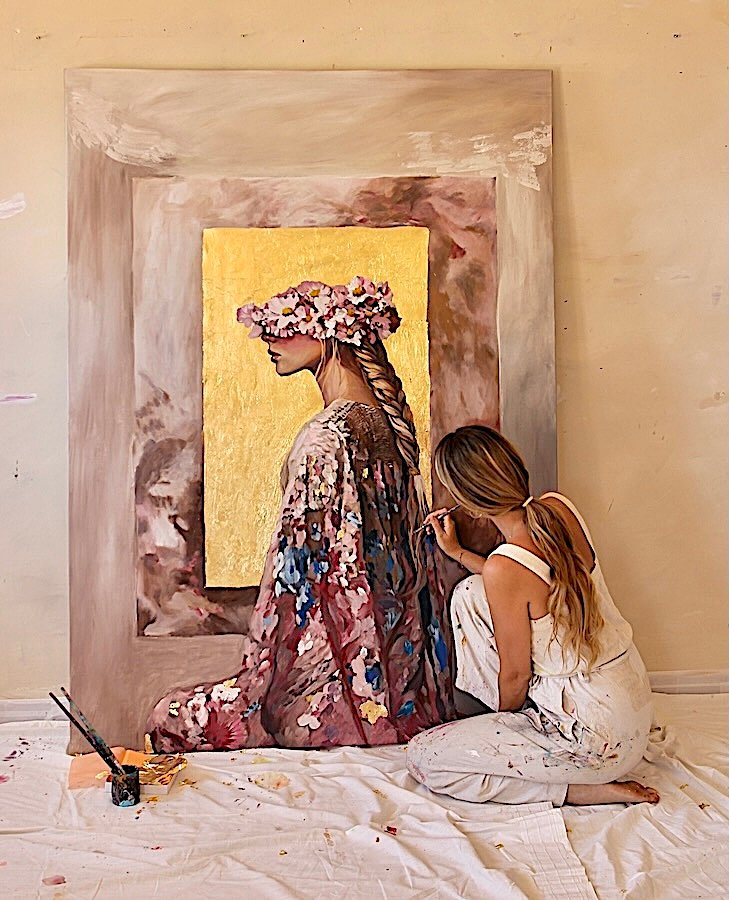
🟥 Do you have any specific rituals or routines you follow before starting a new project?
I clean my studio. It’s like clearing the stage before the play begins.
🟥 What is the most challenging aspect of creating art, and how do you navigate those?
Honestly, one of the hardest parts isn’t even the painting itself, it’s shipping it. I pour myself into a canvas for weeks or months, and then I have to hand it over to bubble wrap and cardboard, hoping it arrives safely on the other side of the world. It feels a bit like sending your child on a plane alone. It’s expensive, stressful, and I always have that tiny fear it will be damaged. But maybe that’s part of the lesson too: art is meant to travel, to live beyond me, even if it makes my heart race every time.
🟥 What keeps you motivated during times when creativity feels like a struggle?
I remind myself that to me creativity isn’t a luxury, it’s like oxygen. And I can’t hold my breath forever. Just like moving your body and doing sports will make you feel better, the hardest part is just starting- it requires discipline and I know myself well enough that I know I enjoy being disciplined.
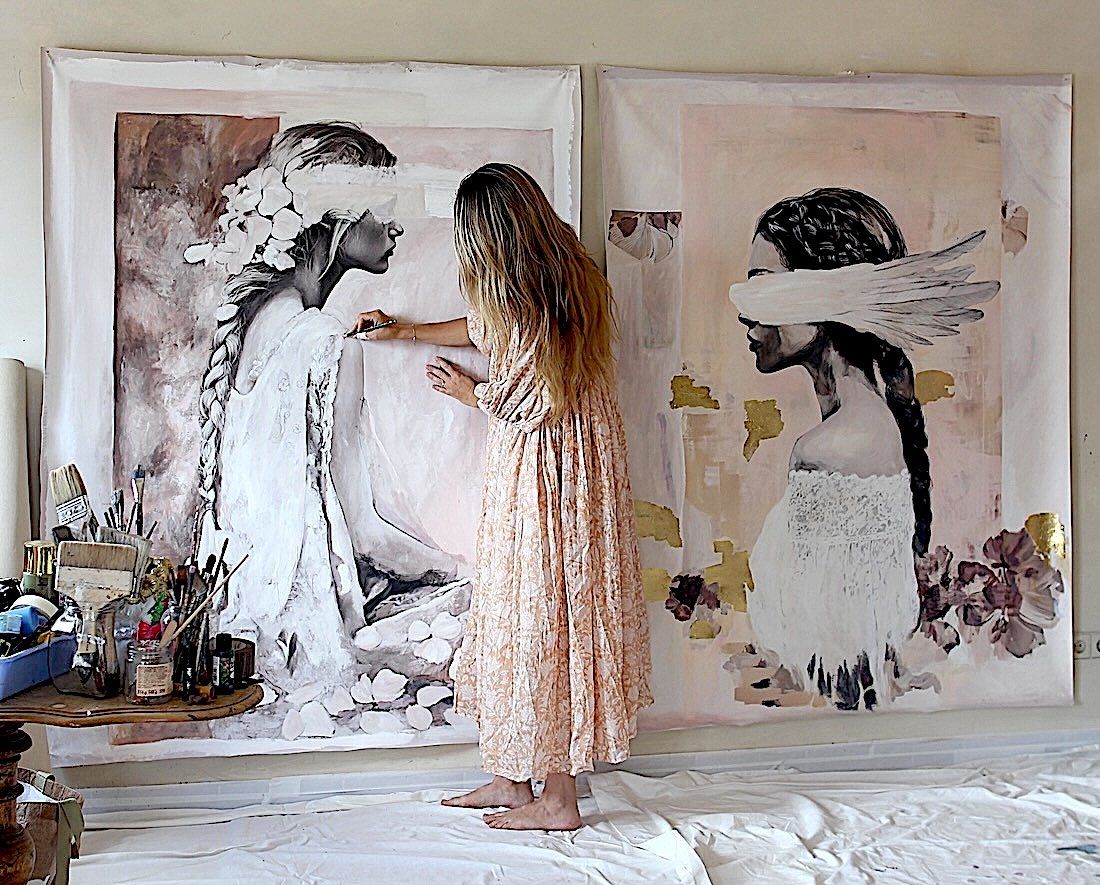
🟥 Can you share an experience or lesson that contributed the most to your growth as an artist?
Motherhood. It taught me how fragile and how strong humans can be at once. That paradox shows up in every piece I make.
🟥 Is there a piece of advice you received that completely changed the way you create or think about art?
Yes, I read it somewhere and it said: “Don’t paint what you think it should look like- paint what it feels like.” That really resonated with me.
🟥 When you view a piece of art, what qualities or emotions do you look for?
I like art that makes you feel something – anything at all. To some that might happen with a piece of abstract art, to some with a political painting, to some with a beautiful landscape. As long as it makes you stop, look, and feel something, that piece of art has accomplished its purpose.
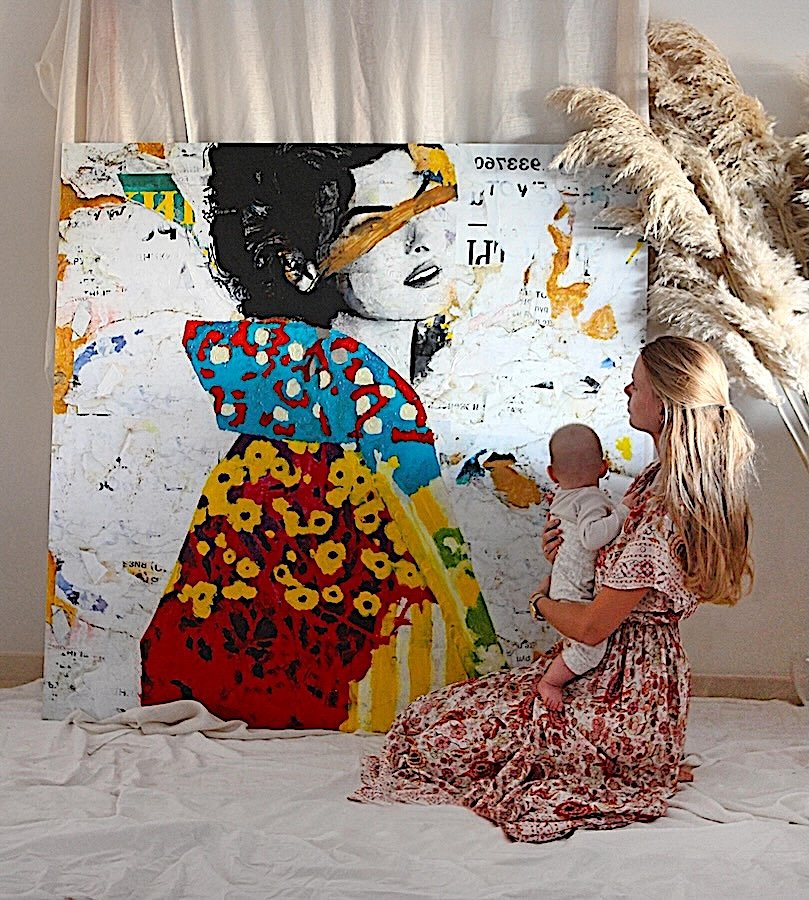
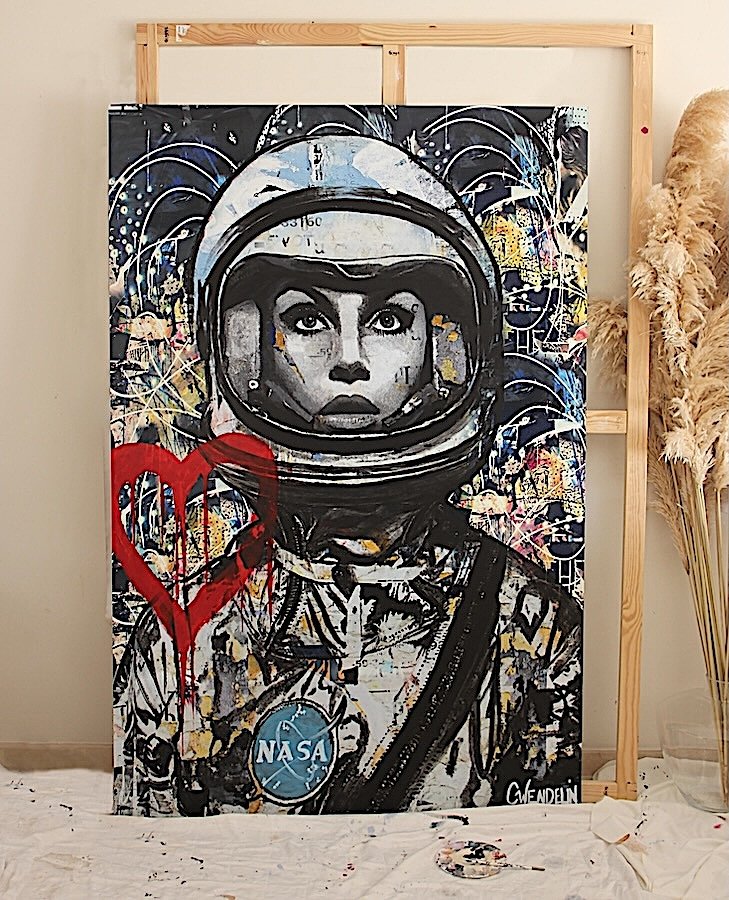
🟥 How do you perceive art’s purpose and its impact on individuals and society?
For me, art is both deeply personal and wildly universal. On one level, it’s about survival: a way of processing what it means to be human. On another, it’s a form of connection, a reminder that our emotions are not just ours alone, we are not alone in our feelings.
I think art’s purpose is to slow us down, to make us notice. To stand in front of a painting and feel something shift inside you, even if you can’t name it. That shift can spark empathy, healing, or even courage.
In society, art acts like a pulse. It reflects the times we live in, but it also dares to dream of something better. When words fall short, art speaks.
🟥 In your view, what do concepts like “passion” and “uniqueness” represent in art?
Passion is the fuel. Uniqueness is the fingerprint. One without the other is just decoration.
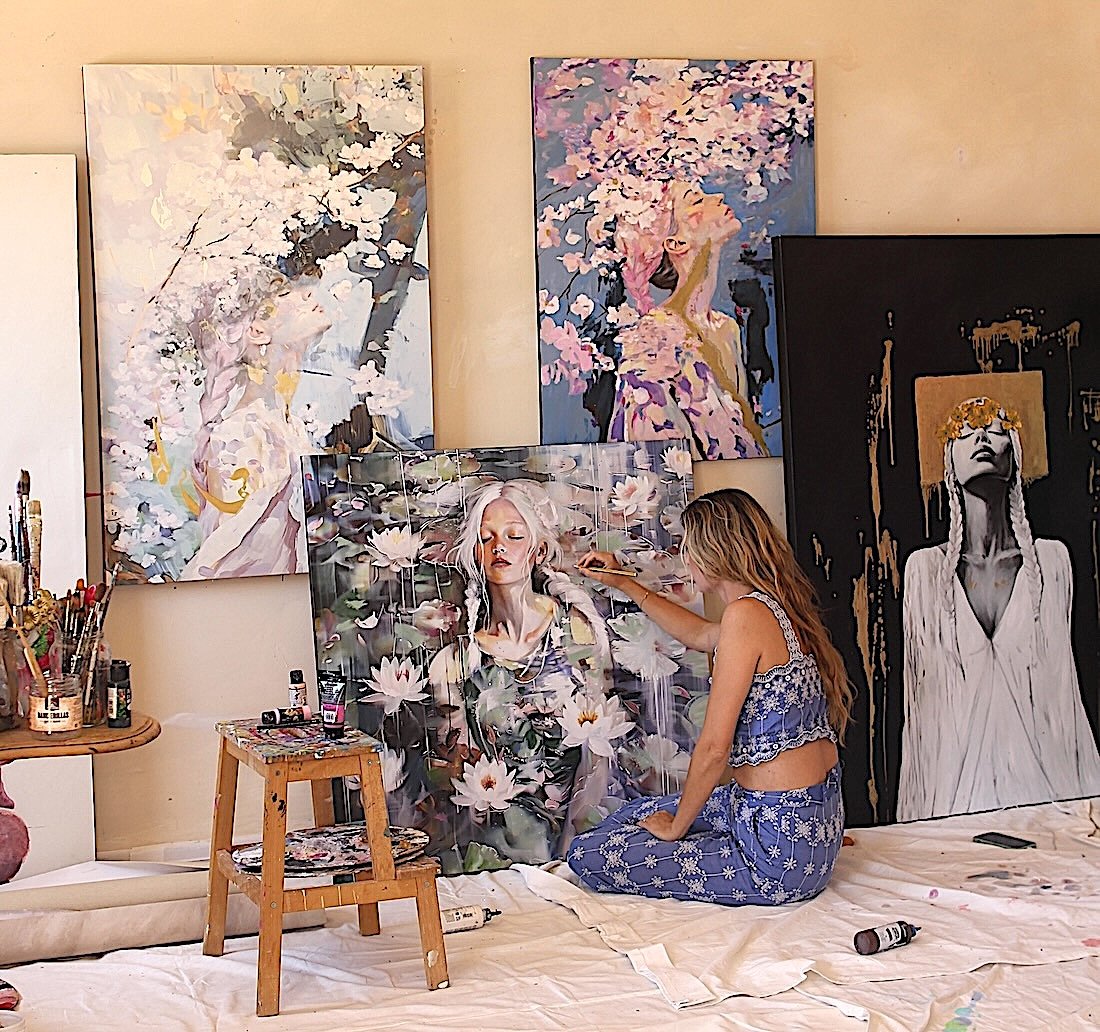
🟥 What are the non-negotiable essentials in your workspace?
Lots and lots of natural light, messy piles of brushes, and enough chaos to feel alive but enough order to not lose my coffee cup.
🟥 Do you have a favorite tool or object in your studio that holds sentimental value?
A paint-splattered wooden stool I’ve had forever. It used to be my mothers stool in the kitchen, I “borrowed” it and now it’s completely full of paint. It’s ugly and perfect.
🟥 What’s the one thing you always need by your side while creating art?
A snack to keep the energy running.
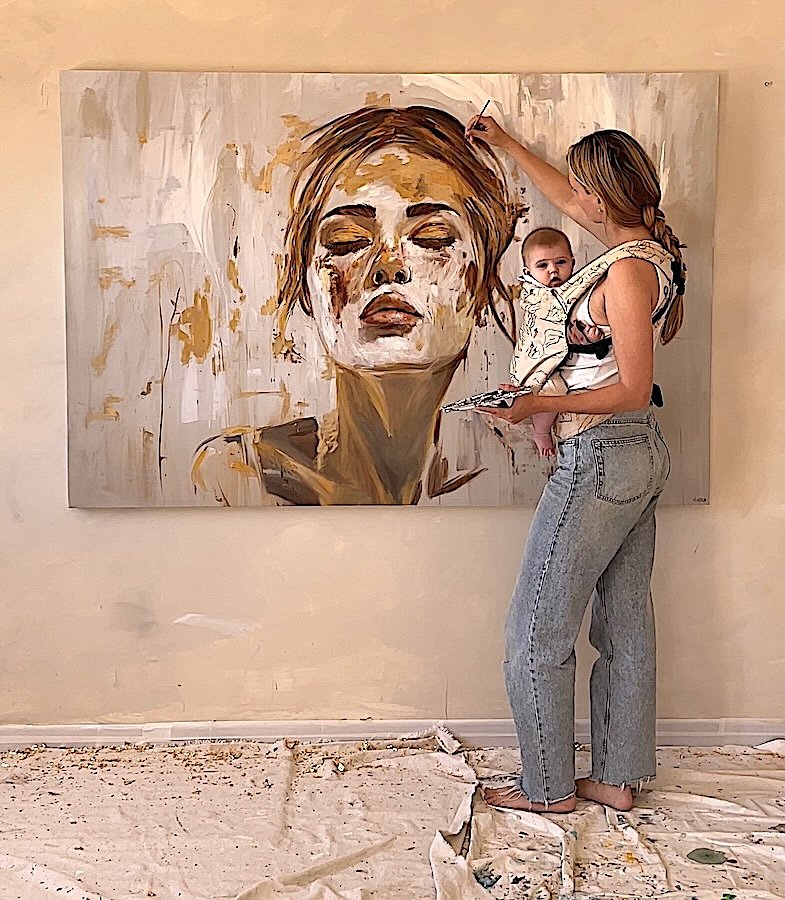
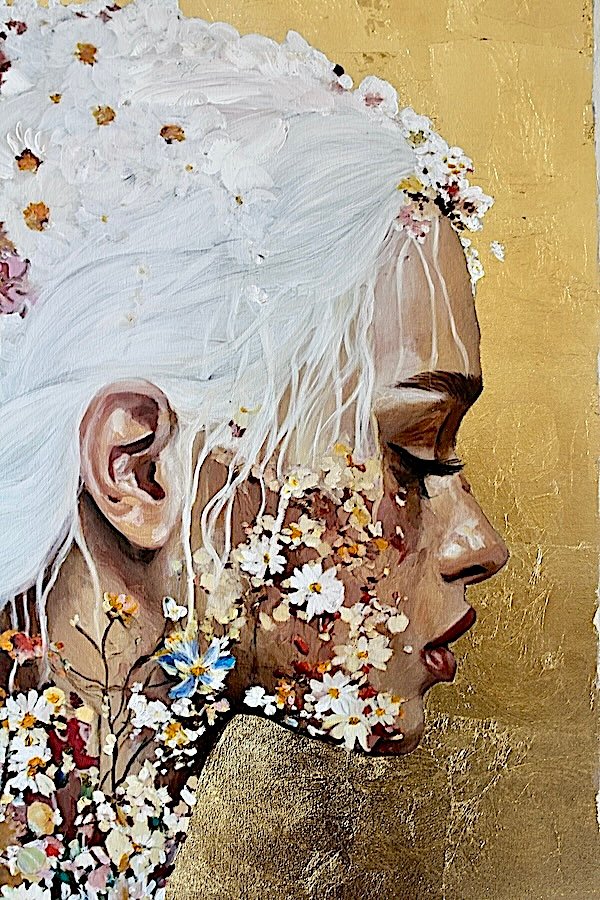
🟥 Who are the artists or people you admire the most, and why?
My mother- an artist herself and my biggest supporter. My husband – the engine of our family and also an artist in his architectural way, he has always opened my eyes to other styles of art. And my children, for the way they create without fear of being wrong.
I also admire a lot of strong women, those who aren’t afraid to speak their truths and defend their beliefs.
🟥 Imagine you could create a piece of art in collaboration with someone from history. Who would you choose and why?
Gustav Klimt. He’d probably try to cover everything in patterns, and I’d be like, “Gustav, leave some breathing space!” But I think we’d balance each other out.
🟥 What’s your superpower?
Turning chaos into beauty. And finding metaphors and meaning in everything.
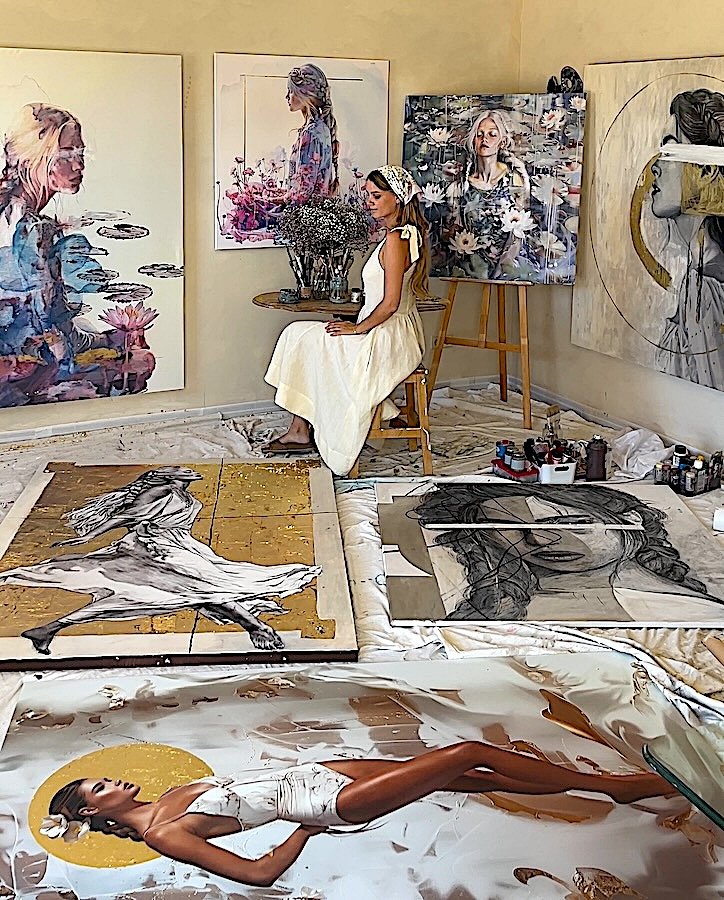
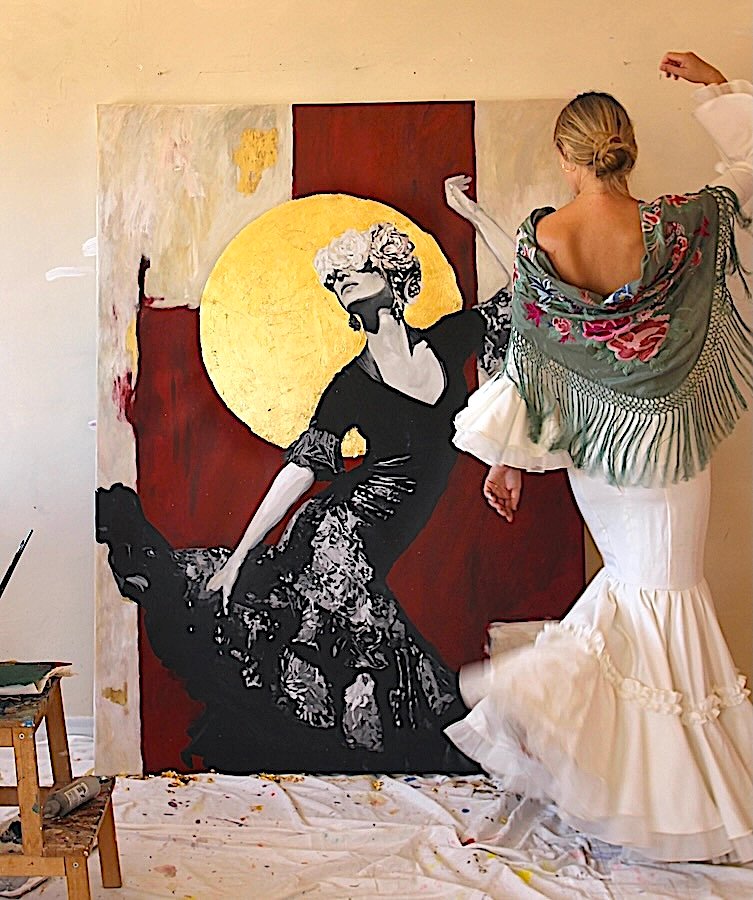
🟥 What does success as an artist mean to you—recognition, impact, or something else entirely?
Knowing that something I created helped someone feel less alone.
🟥 Can you tell us about a piece of your art that holds a special place in your heart and why it’s so meaningful to you?
“Becoming the garden.” I started it during a time of personal struggle and it felt like a painting that healed me. It also happened to receive a lot of media coverage as a celebrity used a photo of this painting and claimed it was hers- it was one of the first times I stood up for my art in front of a lot of people. It made me look at the painting with even more tenderness. Im now working on a series of smaller paintings all inspired by that one.
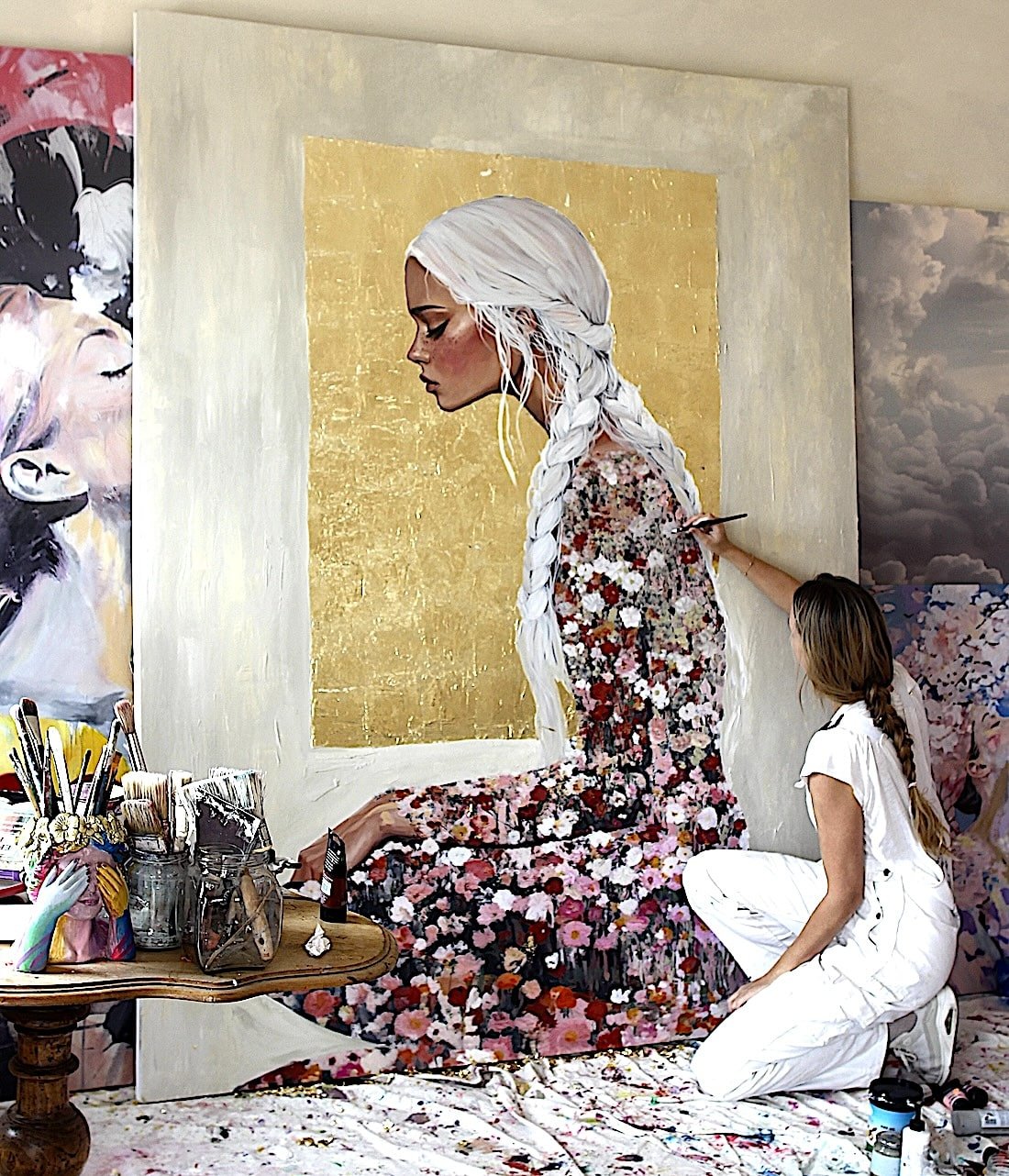
🟥 What are your dreams or goals for the future?
A home with a big garden, walls filled with art, and children running around filled with joy. Building this home has always been my biggest dream.
As for my artist career, I hope to keep creating consistently while also finding more time for breaks, time for self care, time to rest. I feel like the last 6 years have been non-stop, even on weekends and holidays. Im either painting, filming content or tending to my children. I miss having time for sports, playing the piano and reading a good book. So that’s one of my goals in the near future.
As for my art, I hope to define more and more the message I’m trying to share. I feel like I myself am still figuring out what I want to tell the world, and my ideas and values keep changing as I mature.
🟥 How would you define a “creative person”?
Someone who refuses to accept the world as it is and insists on adding something of their own.
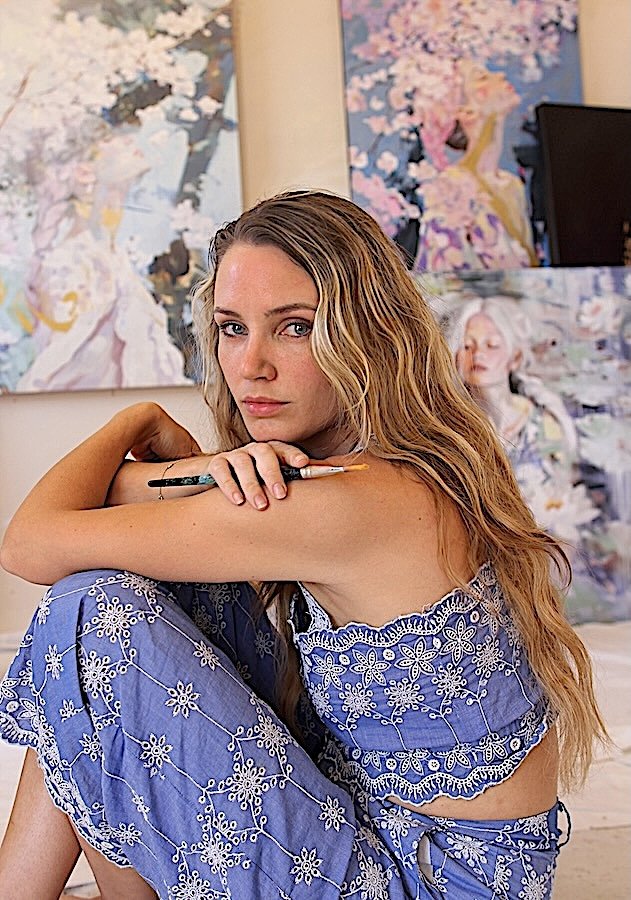
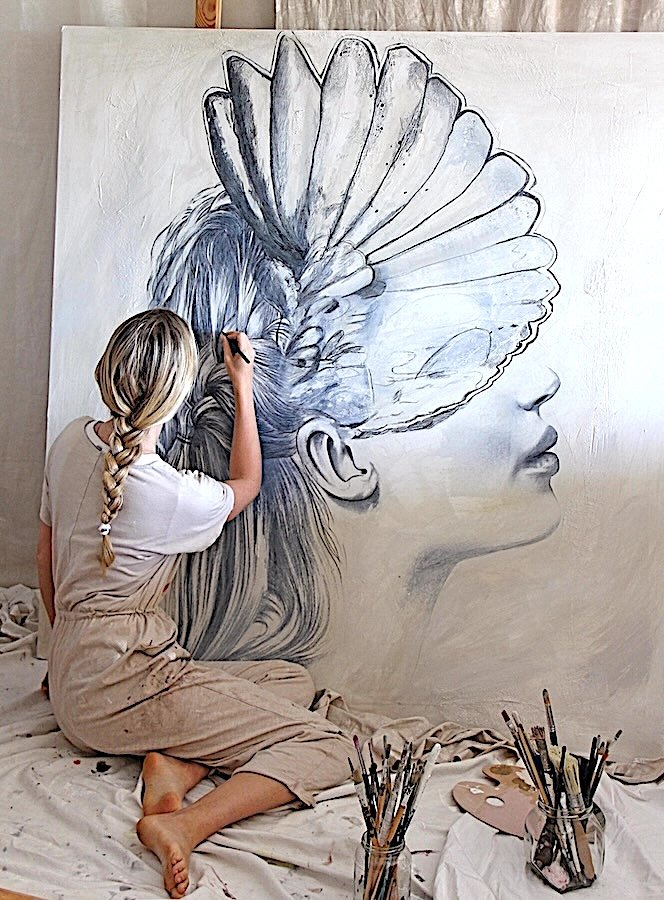
🟥 In your opinion, what are the positive and negative differences between being an artist today and being an artist a century ago?
Today: we can share our art with the world instantly, which is incredible. But the noise is constant, and it’s easy to lose your own voice. A century ago: less exposure, but more depth of focus. I’m always trying to balance the two.
🟥 In your opinion, what are the best and most challenging aspects of being an artist?
The best: freedom. The worst: doubt. They are twins, and you can’t have one without the other.
🟥 What advice would you give to aspiring artists who want to build a meaningful career?
Forget about perfection. Create what feels urgent, even if nobody claps for it yet. The applause will come, but more importantly, so will your voice.
And don’t be afraid to share your work with the world, millions of people today have a phone and access to social media so use that in your favour!
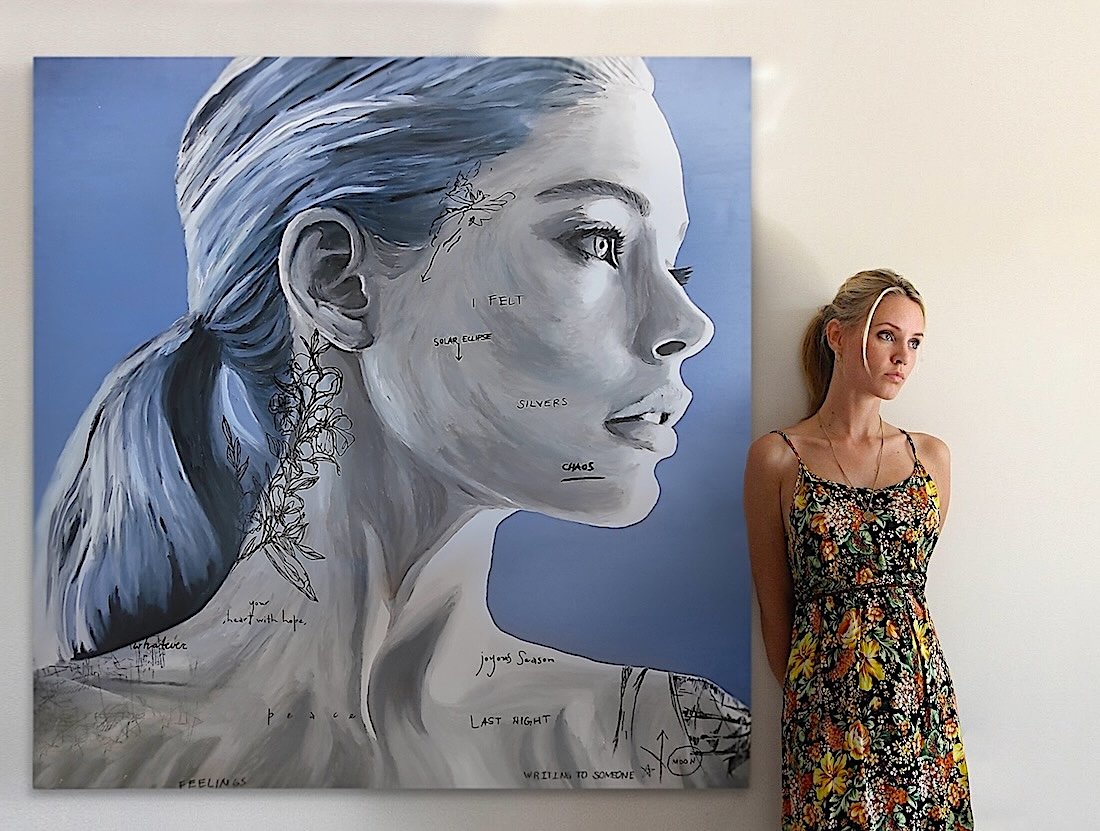
Relevant Links:
Website: www.wendelinart.com
Instagram: instagram.com/carowendelinart
Youtube: youtube.com/@carowendelinart
“Art of Life” book written by Caroline Wendelin: wendelinart.com/pages/book-art-of-life
Note: The answers given by the artist have been quoted verbatim. We have not edited them. This was done to preserve the artist’s authentic voice for our readers.


